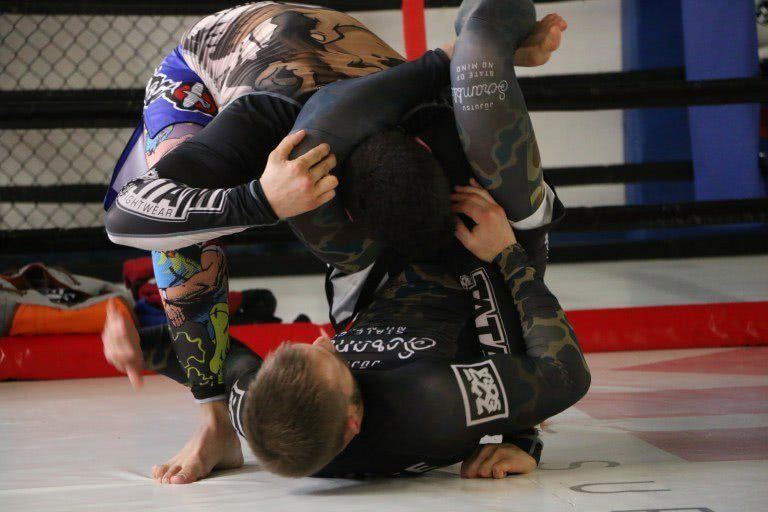We have reposted the content of our good friend and Scrambler, Tom Barlow here, from his excellent online training resource, Tom Barlow Online. We highly recommend it for his clear and concise teaching style and the delicious goldeny nuggets of wisdom contained within.
Every Jiu Jitsu player knows the feeling a split second before they get caught in a submission. It’s the moment you realise you’ve made a mistake and there’s nothing you can do about it. Your only option is to tap and nurse your battered ego.
Don’t get me wrong, getting submitted in training is a good thing. It means your training in an environment that will help you improve and that you’re expanding your comfort zones.
When Should You Tap?
Before we go any further, I want to share my thoughts on when you should tap. I see a lot of people pointlessly get injured because they try to fight out of a submission that’s locked on.
Once a submission is locked in tight, completing it has little to do with technique. Finishing a submission is mostly just strength. Consequently, once a submission is locked in tight, there is little you can do about it except either tap or break.
Personally, I’d like to be able to train the next day, so I fight with everything I have until a submission is locked tight, as soon as that happens I tap. And I advise all my students do the same.
Timing Is Everything
Ok back to defending submissions. Regardless of whether you’re a seasoned world champion black belt or a brand new white belt, how you react in the moments before a submission is locked in tight will dictate whether you tap or not.
And as with any bad situation, prevention is always the best option. The longer you allow a bad situation to progress the worse it will become.
Where a lot of people go wrong is they react too late. They only start defending the submission once it’s locked in. That should be your last line of defence not your first.
If you think about it, there are several things your opponent has to do before they get the submission. They have to set the right grips. They have to create the right angle. They have to open your opponent’s defences. And they have to transition into the submission.
At any of these points, you can stop their submission attempt in its tracks and force them to change their attack. In this article, we’re going to look at three key concepts that will allow you to defend against any submission.
Concept #1: Killing the Angle
Most submission attacks require your opponent to create an angle on you.
Take the triangle, for example, if your opponent is square on to you then it will be much harder to finish the attack as the pressure on the neck will be wrong.
The same applies to goes for armbars, leg locks, chokes, and just about every other submission.
Consequently, if you can kill the angle before your opponent starts the submission attack, you’ll never need to defend it. The video below explains this further and covers a few examples.
Concept #2: Centre Line Control
Controlling the centre line is very closely linked to killing the angle. Anytime your arms cross the centre of your body or your opponents body; you’re putting yourself at risk of submission.
An excellent example of this is the arm bar from closed guard. To apply an armbar effectively, your arm must be in the centre of your opponents body. If you stop this, there is little risk of the submission.
If you can control the centre line, you’ll be in an excellent position to avoid countless submission attacks. Check out the video below to see exactly what I mean.
Concept #3: Lines of Defence.
The final submission defence concept I want to share with you is lines of defence.
When I think about defending submission, I look at it as though there are three different times to defend.
Firstly, you can defend before the submission ever happens (we talked about this earlier with killing the angle and centre line control)
Secondly, you can defend during the submission. That would be something like hiding your arm as your opponent tries to armbar you.
Your final line of defence is a split second before you’re forced to tap. This could be something like the hitch-hiker armbar escape or pulling the knee open during a knee bar. This video covers what I mean:
Be Safe Before You Escape
To close, I want to share one final thought about submission escapes.
Keep in mind whenever you’re defending a submission your primary objective is to escape the submission NOT to sweep or submit your opponent.
Sometimes your submission counter my result in a reversal or submission opportunity, but these should are by-products of your defence, not your goal.
Always remember, you have to be safe before you can escape.
